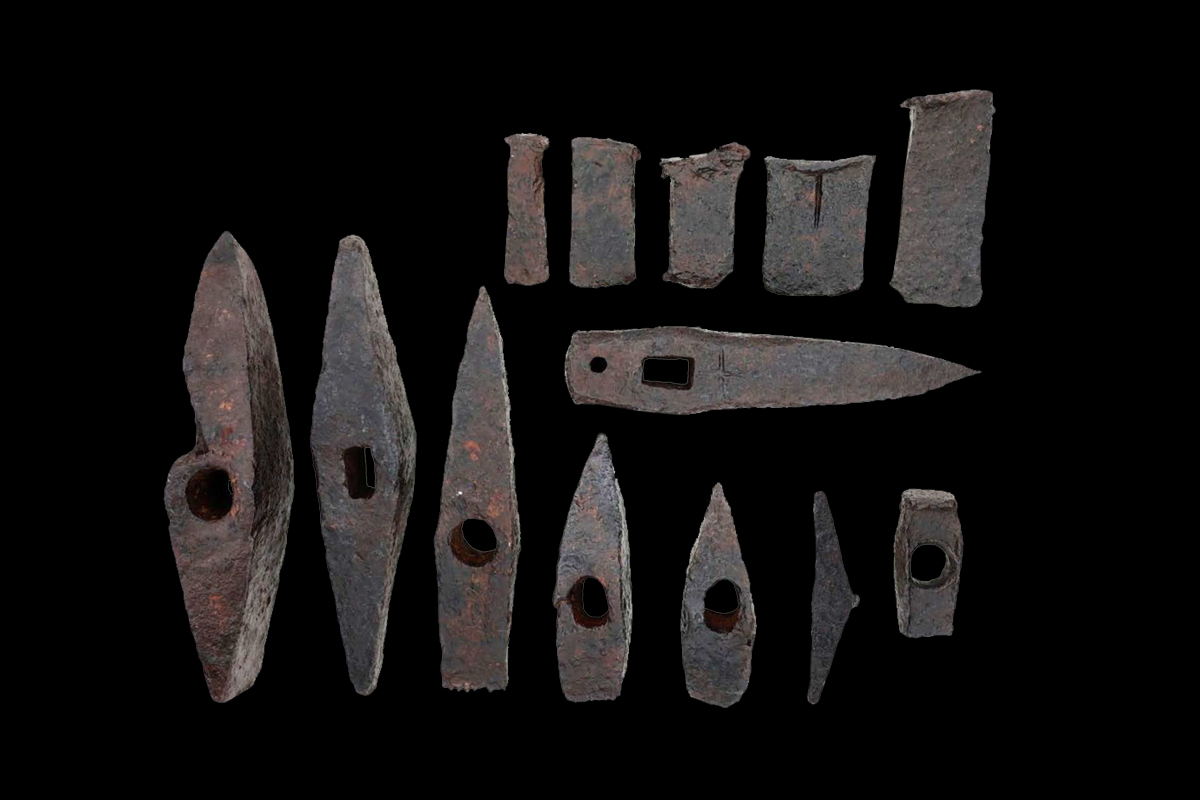A rare set of stonemason tools from the Dacian kingdom period has been discovered at Măgura Călanului in Hunedoara county, Romania.
Măgura Călanului is a quarry site used in ancient times for the extraction of soft, fine-grained limestone – an ideal material for construction and decorative stonework.
The site covers an area of more than 30 hectares and features dozens of quarry faces up to 8 metres in height, in addition to numerous semi-finished stone blocks and large amounts of debris scattered throughout the forested area.
Traces of chisel marks, signs of detachments, and stone processing are direct evidence of the quarrying techniques employed by Dacian stonemasons from the 2nd century BC until the Roman conquest following Trajan’s Dacian Wars in AD 106.
A local villager recently came upon a stonemason’s toolkit at Măgura Călanului, comprising 15 tools—including five double-headed picks with toothed edges (characteristic of Dacian craftsmanship), five stone-splitting wedges, a whetting hammer, a portable field anvil, a flat chisel, and a pointed tool for detailed finishing work.
Archaeologists are yet to conclusively date the toolkit, but the form and design of the tools are consistent with examples found at other Dacian sites.
According to a study published in De Gruyter Brill: “The discovery at Măgura Călanului deepens our understanding of stonemasonry in Dacia, challenging previous assumptions about construction and quarrying in this region.”
“Future research may reveal a connection between these tools and the tool marks on quarry faces and stones, potentially confirming their use at the site and providing insights into the specific techniques employed in Dacian stoneworking,” added the study authors.
Header Image Credit : De Gruyter Brill
Sources : De Gruyter Brill







